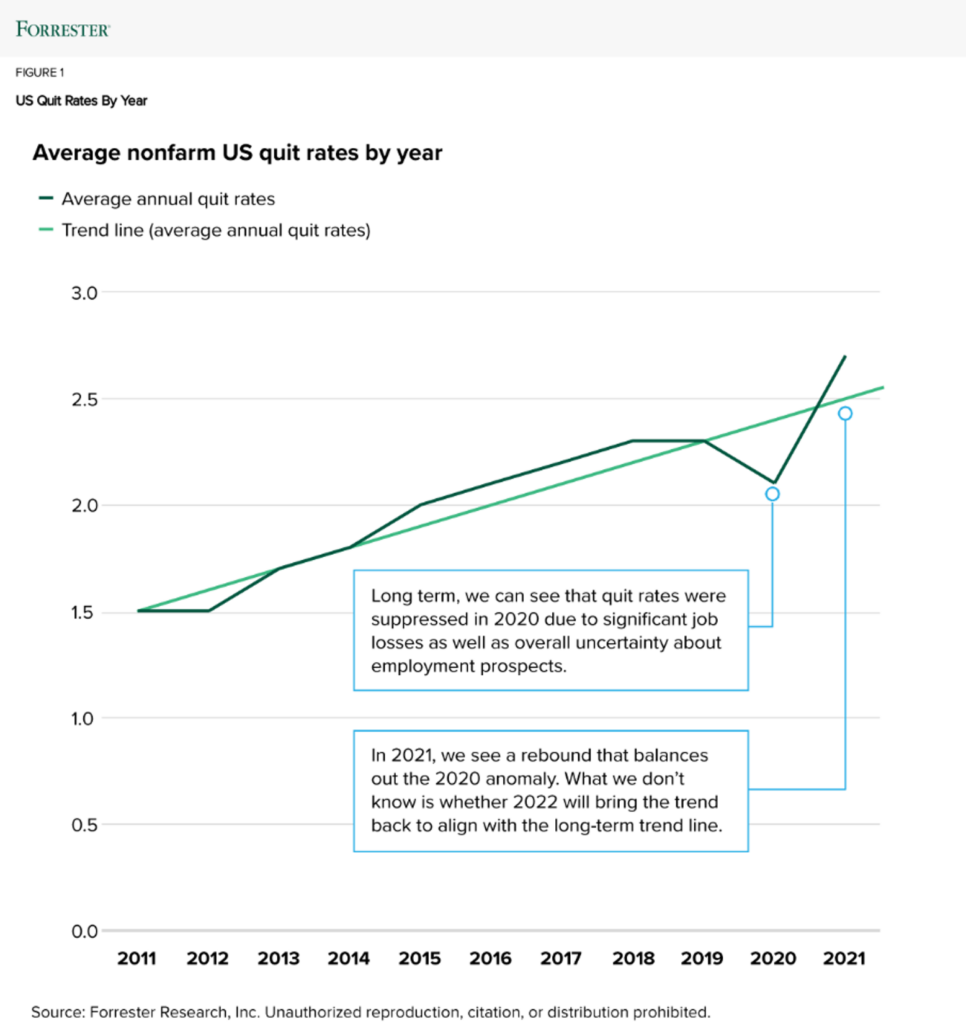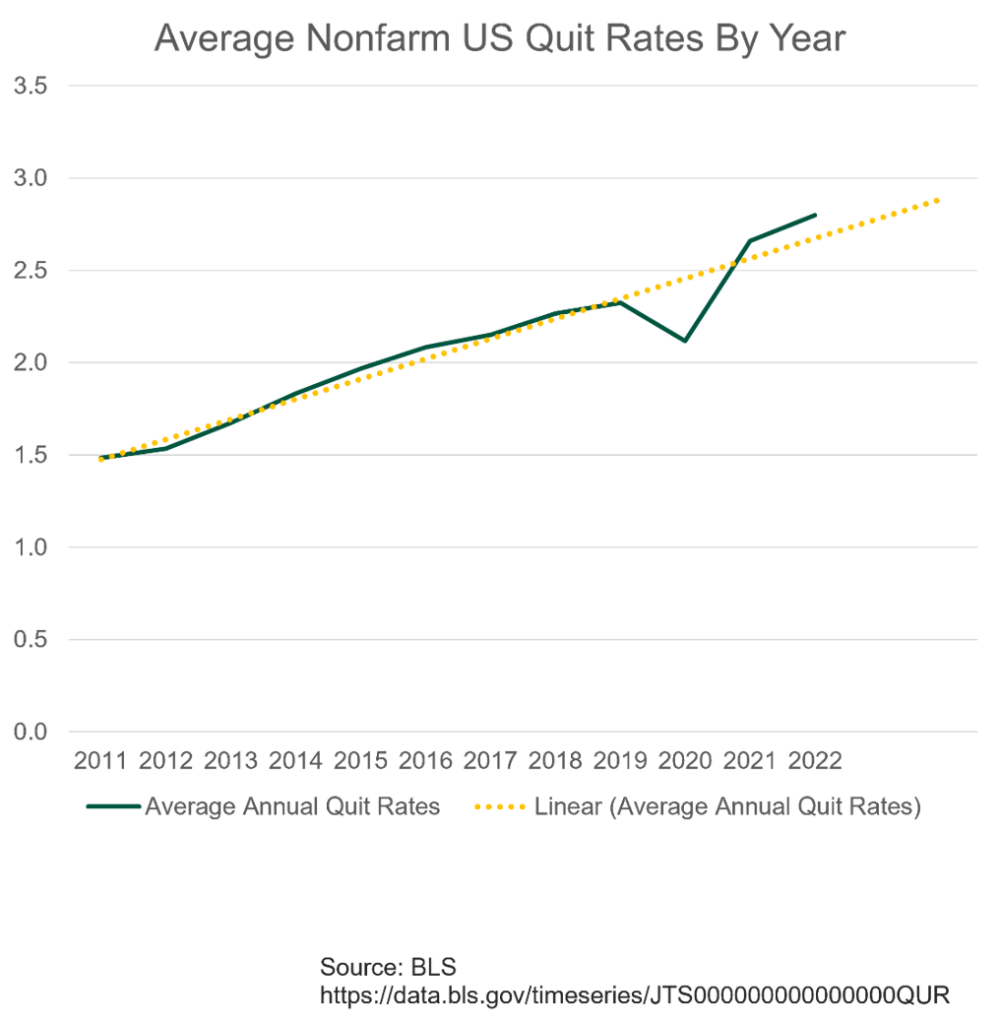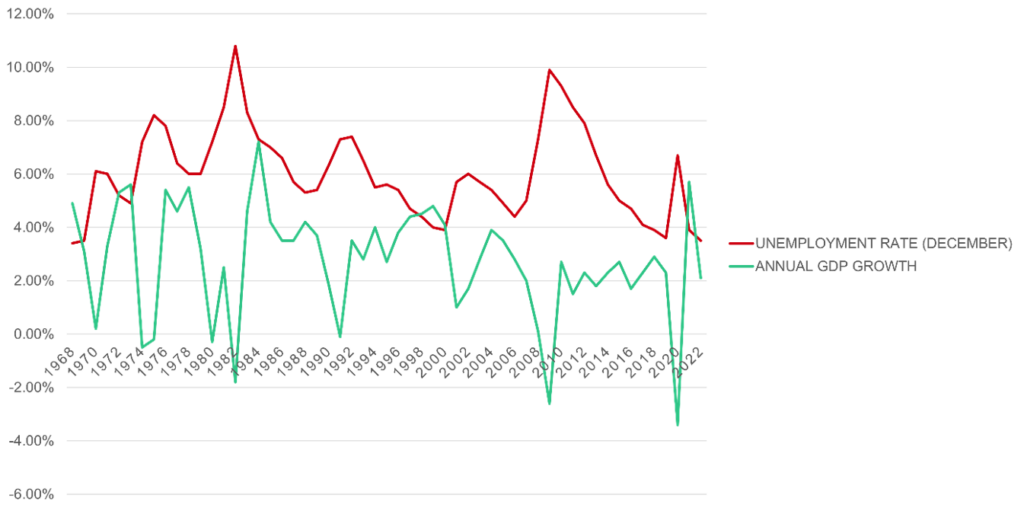Future Of Work Predictions: So Far, So Good, Which Is Kind Of Bad
We Said 2023 Would Be Weird … We Were Right
Just over a year ago, we were in the throes of the so-called “great resignation.” Nearly every call I had with a client was about how to compete for talent, including debates over signing bonuses vs. other types of perks, discussions of how high salaries might go, and whether to expand remote work policies as a way to attract more talent. At the time, we warned that this talent constraint was not a moment-in-time phenomenon, but the culmination of long-term trends. And as we looked ahead to 2023, we expanded on this theme, predicting the onset of an unprecedented talent-constrained recession.
In April, I gathered with my colleagues Betsy Summers and Jonathan Roberts at the UNLEASH HR conference in Las Vegas. (Read what Jonathan learned about what keeps HR and employee experience [EX] leaders up at night.) In a session with a boardroom full of HR and EX leaders, we took a bold look at the data to see whether our predictions from 2022 have held up. And the good news for us is that our predictions were right — even if that’s bad news in some ways for everybody else. Let’s start with the R-word: While not officially a recession, we’re experiencing a slowdown in the global economy, layoffs dominate the headlines, and many companies are enforcing and expanding return-to-office policies. But a closer look at the numbers shows something truly fascinating. First, let’s look at the graphic from last year’s report on the great resignation.

Let’s see what happens when we extend that figure to include the 2022 data. We were correct: The climb rate of quits has slowed from 2021 but continues to steadily rise as the Baby Boomer generation exits the workforce, right on track.

But another long-term trend is even more interesting: the relationship between GDP growth and the unemployment rate. For nearly a century, these two indices have had an inverse relationship. When the economy grows, unemployment shrinks and vice versa. We can see that trend all the way back to 1929, but I’ll spare you the figure and instead zoom in to a more recent time span. There, we see something we’ve never seen before: Both lines are descending at the same time. This pattern is so new that it has left economists and executives alike scratching their heads.

This stumper is important to point out because companies are currently making decisions about talent under some assumptions that can’t be validated. No official recession is here yet — in fact, Justin Wolfers, former White House economist, said this to The Morning Dispatch about recessionary forecasts: “Those forecasts have been wrong, many, many, many months in a row. That’s not a promise that they’ll be wrong in the future, but the single best predictor of what’s going to happen next quarter in the economy is what’s going on right now.”
But in some ways, a measurable recession would at least give executives some confidence to handle the current moment the way they normally would — whether right or wrong. Instead, they’re left with a will-we-or-won’t-we situation where unemployment stays at record lows even as GDP growth tightens. The net of this for leaders is simple: While we don’t know what the remainder of 2023 will bring to the table, we do know that it’s more challenging than ever to lead organizations through these times. That’s why I’m leading a leadership track at our CX North America event in Nashville in June. Join us there to get expert input from me and many other outstanding analysts who can give you tools to manage whatever headwinds come your way.
